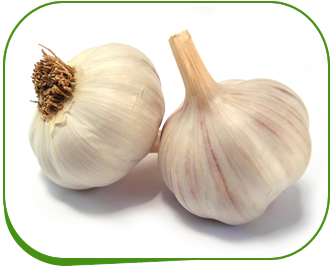 Garlic is easy to grow and can be grown year-round in mild climates. While sexual propagation of garlic is indeed possible, nearly all of the garlic in cultivation is propagated asexually, by planting individual cloves in the ground.[6] In cold climates, cloves are planted in the autumn, about six weeks before the soil freezes, and harvested in late spring. The cloves must be planted at sufficient depth to prevent freeze/thaw which causes mold or white rot Garlic plants are usually very hardy, and are not attacked by many pests or diseases. Garlic plants are said to repel rabbits and moles.Two of the major pathogens that attack garlic are nematodes and white rot disease, which remain in the soil indefinitely after the ground has become infected. Garlic also can suffer from pink root, a typically nonfatal disease that stunts the roots and turns them pink or red.
Garlic is easy to grow and can be grown year-round in mild climates. While sexual propagation of garlic is indeed possible, nearly all of the garlic in cultivation is propagated asexually, by planting individual cloves in the ground.[6] In cold climates, cloves are planted in the autumn, about six weeks before the soil freezes, and harvested in late spring. The cloves must be planted at sufficient depth to prevent freeze/thaw which causes mold or white rot Garlic plants are usually very hardy, and are not attacked by many pests or diseases. Garlic plants are said to repel rabbits and moles.Two of the major pathogens that attack garlic are nematodes and white rot disease, which remain in the soil indefinitely after the ground has become infected. Garlic also can suffer from pink root, a typically nonfatal disease that stunts the roots and turns them pink or red.
Garlic plants can be grown closely together, leaving enough space for the bulbs to mature, and are easily grown in containers of sufficient depth. Garlic does well in loose, dry, well drained soils in sunny locations, and is hardy throughout USDA climate zones 4 - 9. When selecting garlic for planting, it is important to pick large heads from which to separate cloves. Large cloves, along with proper spacing in the planting bed, will also improve head size. Garlic plants prefer to grow in a soil with a high organic material content, but are capable of growing in a wide range of soil conditions and pH levels.